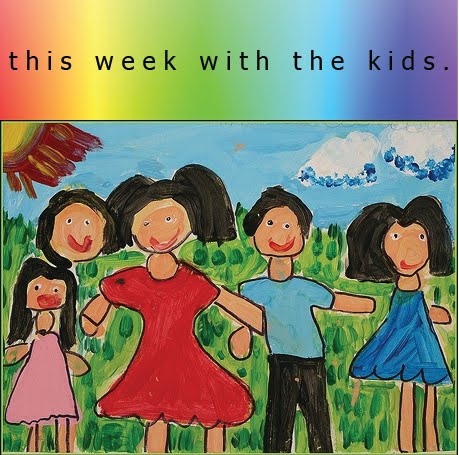“In other areas of child
development, society welcomes a framework of optimal parenting practices. For
example, we accept that five servings of fruit and vegetables a day is optimal
and preferable to four servings, which in turn is preferable to three servings
and so on. …
And yet when it comes to
parenting practices such as parent/non-parental care, which infringe upon our
adult professional freedoms, society seems to actively retreat from
constructing any framework that may be construed as a hierarchy of optimum to
less optimum practices. No matter how uncomfortable, New Zealand needs a
framework to make fully informed
decisions about its children’s wellbeing.”
WHO CARES : Dr Aric Sigman p.26
The request is a good one.
Wouldn’t it be convenient and helpful if we had such a scale that we could
measure ourselves or our lifestyle practice against! We could then ‘tick the
box’, confidently thinking we have provided our child with all that is needed for them to
mature into a resilient adult, successfully handling the stresses they will
encounter in their future life.
My first CONCERN ~
But even if an acceptable
authority published such a framework, would adhering to it assure that our
children would be resilient to stress, when the time came?
I am not disagreeing with what Dr Sigman says. It is essential that he clearly makes the point that a mother’s
availability, love and nurture of her preschoolers contributes enormously to
building a stable and resilient adult.
My concern is that a misunderstanding can occur here, and it is
best explained by looking at Dr Sigman’s illustration, that everyday, children
need 5 servings of fruit and vegetables. This of course is correct because it
contributes to children growing strong and healthy bodies and minds. However,
these same children can also be struck down by a deadly disease or condition
and the health of their body would then be in jeopardy regardless of eating fruit and vegetables.
Similarly with stress and
anxiety. There are situations that can enter the lives of children which can
cause them to become depressed, have panic attacks and worse.
But we are wise
to take Dr Sigman’s advice, just as we are wise to follow the advise of the Ministry of Health, and give our children 5 servings of fruit and vegetables every day. Following this wisdom builds a solid foundation and is the best contribution we can make to our children's future - however, it does not guarantee that our child will go through life without serious health issues or difficulty in handling stress.
"In the human brain, the quality of a mother's care in early childhood is a factor thought to influence the size of the hippocampus (Buss et al, 2007). Attachment insecurity has now been significantly related to reduced brain size and brain cell density within the hippocampus of young adults (Quirin et al, 2010) ...
Maternal care or a deficiency of it, plays a key role: maternal care can produce semi-permanent changes in gene activation in brain regions vital in responding to stress, thereby providing a potential mechanism for the early childhood programming of stress-induced disease in adults (Tara, Craft and DeVries, 2009) ...
Therefore, a key aspect in the early care environment for young children is the ability of adults to be available to respond appropriately to stress reactions triggered (inevitably) by normal day-to-day events." WHO CARES : Dr Aric Sigman p.18, 19, 20.
The "quality of a mother's care" is under examination in the above sentences. If her care is deficient the child ends up not developing brain skills which govern their future response to stress. The responsibility is returned to the mother to be available and "respond appropriately" to normal everyday happenings which can cause stress to the child.
My second CONCERN ~
To many mums these words can be alarming. They believe they are being told that they must prevent the baby from experiencing any situation which may cause stress. So the baby must be picked up and not left to cry, the child must be pacified and given-in-to so they remain satisfied and don't become anxious.
But Dr Sigman is not saying or intending this interpretation at all. In fact this pattern of dealing with children will only develop children who are self-centred and lack self control. (If your children currently are living in this way and you would like help to change this situation, look at my website - A Way to Parent and make contact with me.)
Dr Sigman says parents are to "respond appropriately".
How do parents do this in stressful, difficult everyday situations?
* By being rational with self control
* By staying calm
* By being prepared with a thought out plan of what to do ready for when it happens
* By cultivating a happy and positive mindset towards her child
* By looking after yourself with regular rest and exercise, eating and drinking healthily and continuing to develop yourself.
(Again look at my website if you would like help by discussing any of these ideas)
A stressed mum will invest stress into her child.
A mum's attitude and behaviour play the biggest role in creating a home environment which ensures child wellbeing is an important priority.
THISWEEKWITHTHEKIDS ~ "Female mammals raised with nurturing mothers have been shown to exhibit more nurturing and less anxious maternal behaviour in their turn. Transfer of maternal behaviour from one generation to another is thought to be an example of an epigenetic change, in which environmental influences [quality of a grandmother's mothering] cause chemical changes to DNA that leads to changes in the expression patterns of genes which influence the way the next generation mother cares for her child (Esel, 2010)". p. 27.
Be encouraged as you mother your preschooler this week.
Cathy















